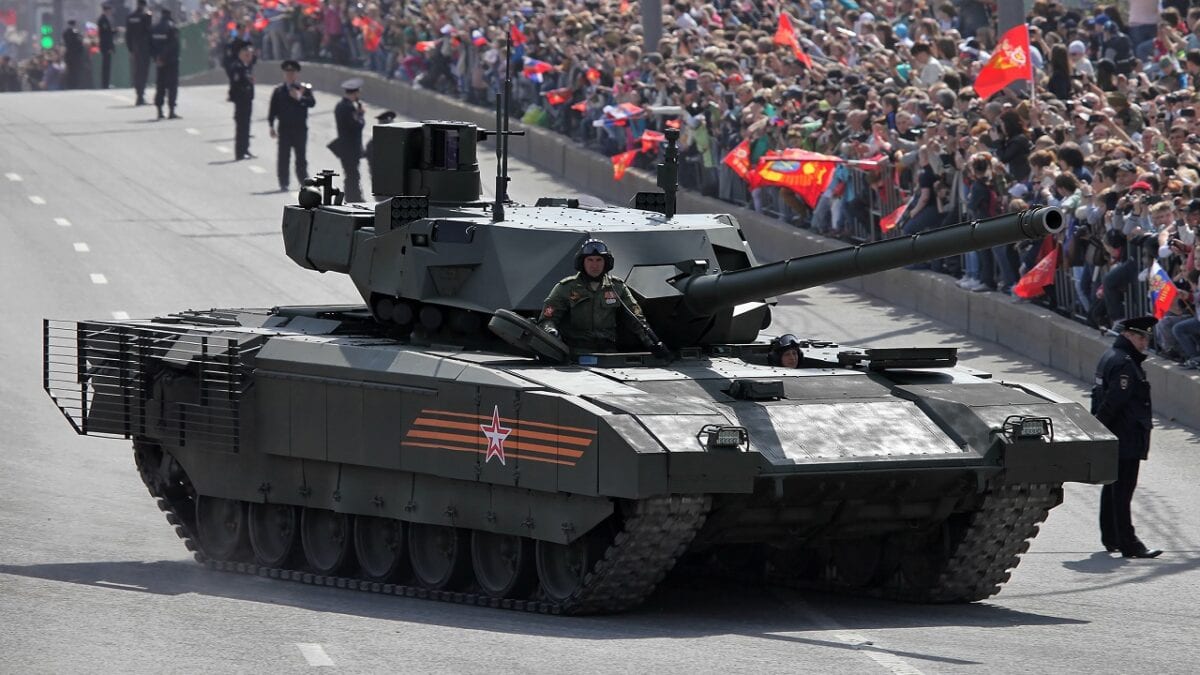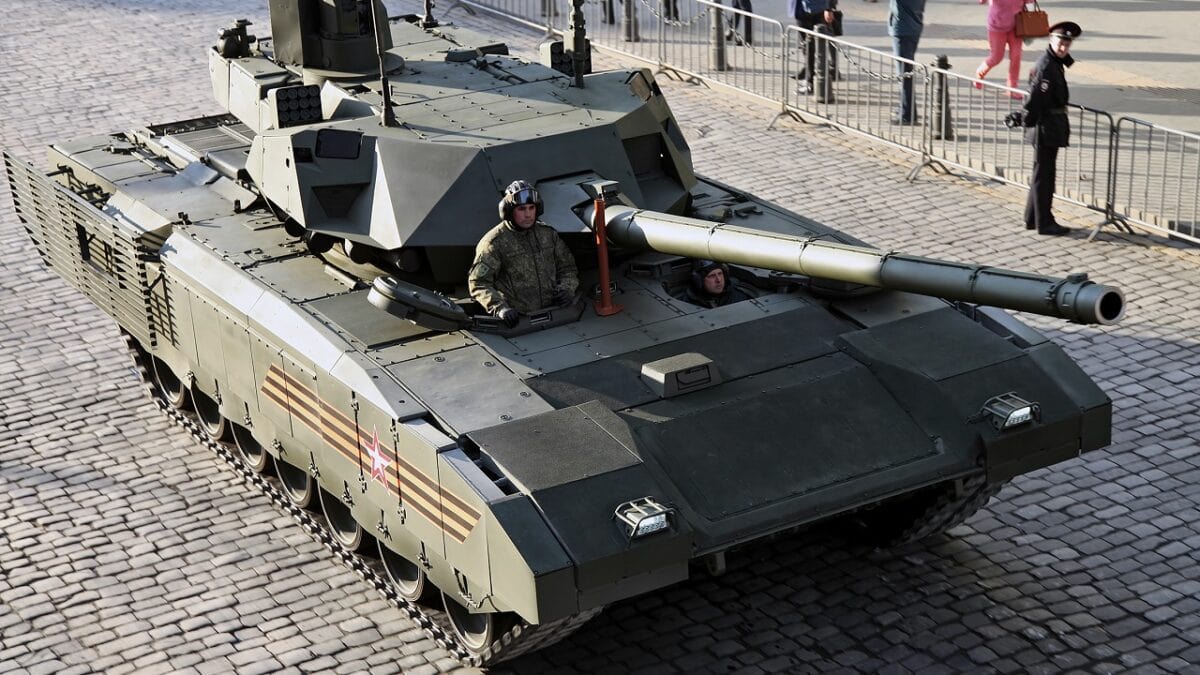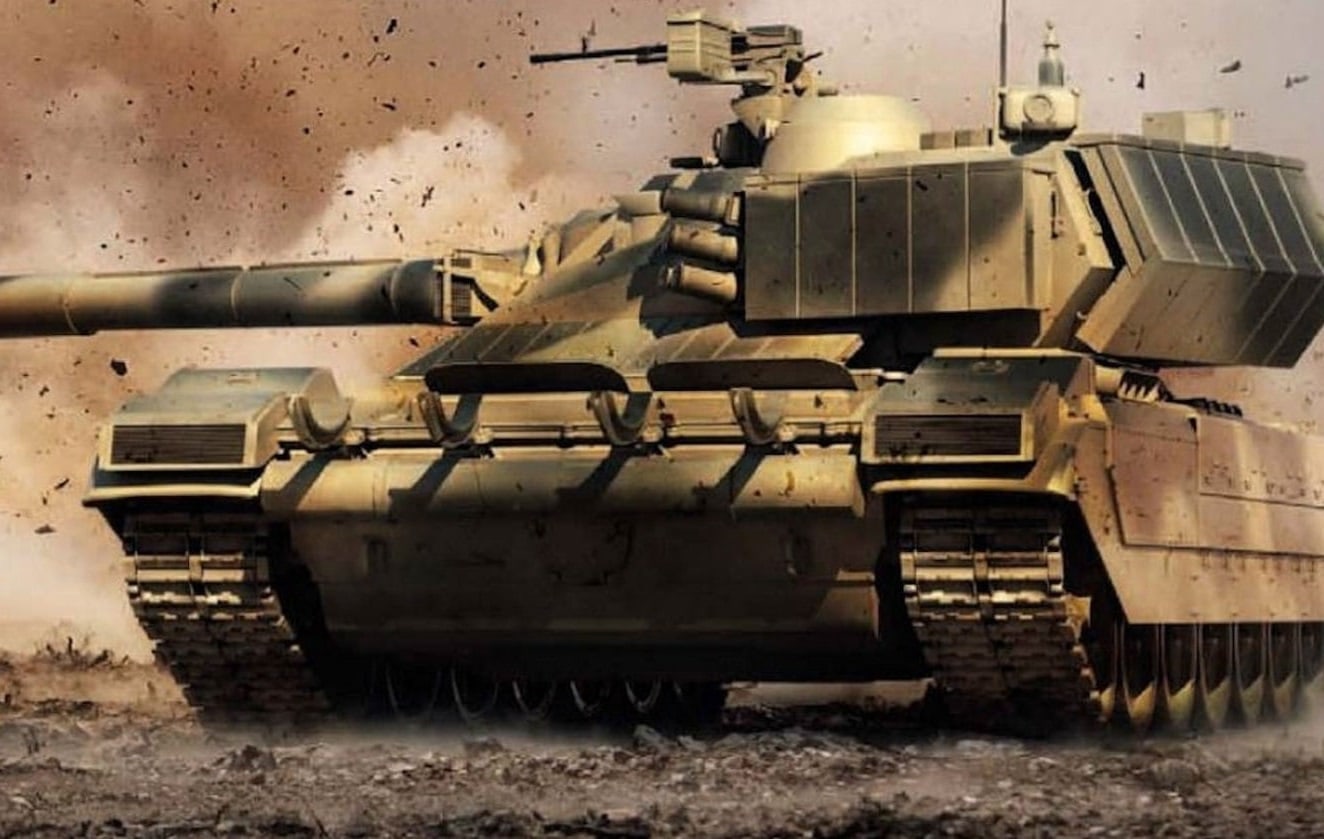Russia’s T-95 Tank – A 3 Minute History: The Russian T-95 main battle tank could have made a difference on the battlefield and it was a good thing for the Americans and their allies it never came to fruition. The tank would have had a large gun that would have outclassed tanks from the United States and NATO. The T-95 had other features that would have made it formidable – including more range, a digital fire control system, and better crew survivability.
The Main Gun Would Have Been Dominant
First, about that noteworthy gun. It was designed to be a 152mm smoothbore main gun, which was larger and more powerful than the M1A2 Abrams and its allied tanks in Europe. The gun could fire the gamut of high explosive rounds expected from a modern tank, but also guided missiles. The 152mm main gun would have boasted a longer range than enemy tanks. It was the size of some artillery pieces.
The Turret Was Remote-Controlled for Better Crew Safety
The turret would have been automated, so the crew could stay in the hull for better protection and use remote-control to operate the turret. The gun was also fed automatically. The gun was aimed with a thermal sight. The autoloader was raised to a higher position in case the tank ran over a mine. The turret also was taller than other Russian tanks to enable the utilization of the big gun. This allowed for better elevation which was designed to help out in urban combat based on hard lessons learned from the bloody fighting in Chechnya in which rebels destroyed many Russian tanks. The gun would have also had the ability to engage over-the-horizon targets with its guided missiles.
A Powerful Engine and Armor to Better Shoot, Move, and Communicate
The T-95 engine would have been a powerful diesel with 1,500 horsepower leading to a potentially greater speed than other Russian tanks such as most variants of the T-90, which only get 1,000 or 1,100 horsepower from their engines.
The T-95 was also going to transform Russian the way it utilized protective armor. It would have had the ever-strong Relikt explosive reactive armor and an active protection system now common on Russia’s upgraded tank variants.
T-95 – Other Features That Would Have Stood Out
The super tank also had a planned battle control system that was ahead of its time. The crew could immediately tell how many rounds it had left and other status measures. The communication system was top-notch.
Eventually, the Russians thought the T-95 prototypes it built were too advanced for production. So certain planned features were integrated into the T-14 Armata. The T-95 would have been a match-up problem for America and its allies during a potential armored maneuver warfare scenario. The powerful gun and survivability features would have certainly been something to reckon with.

Image of T-14 Armata tank in the Russian Military. Image Credit: Vitali Kuzman.

Russian Armata T-14 Tank. Image Credit: Creative Commons.
Now serving as 1945’s Defense and National Security Editor, Brent M. Eastwood, PhD, is the author of Humans, Machines, and Data: Future Trends in Warfare. He is an Emerging Threats expert and former U.S. Army Infantry officer.

